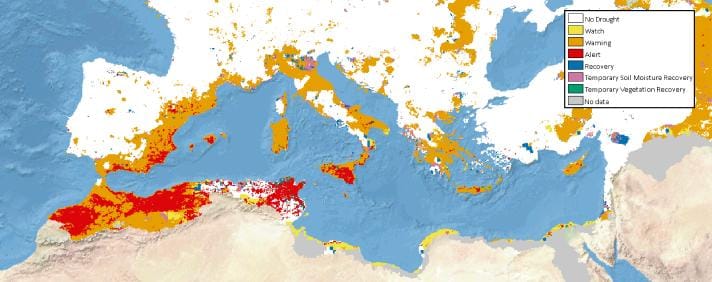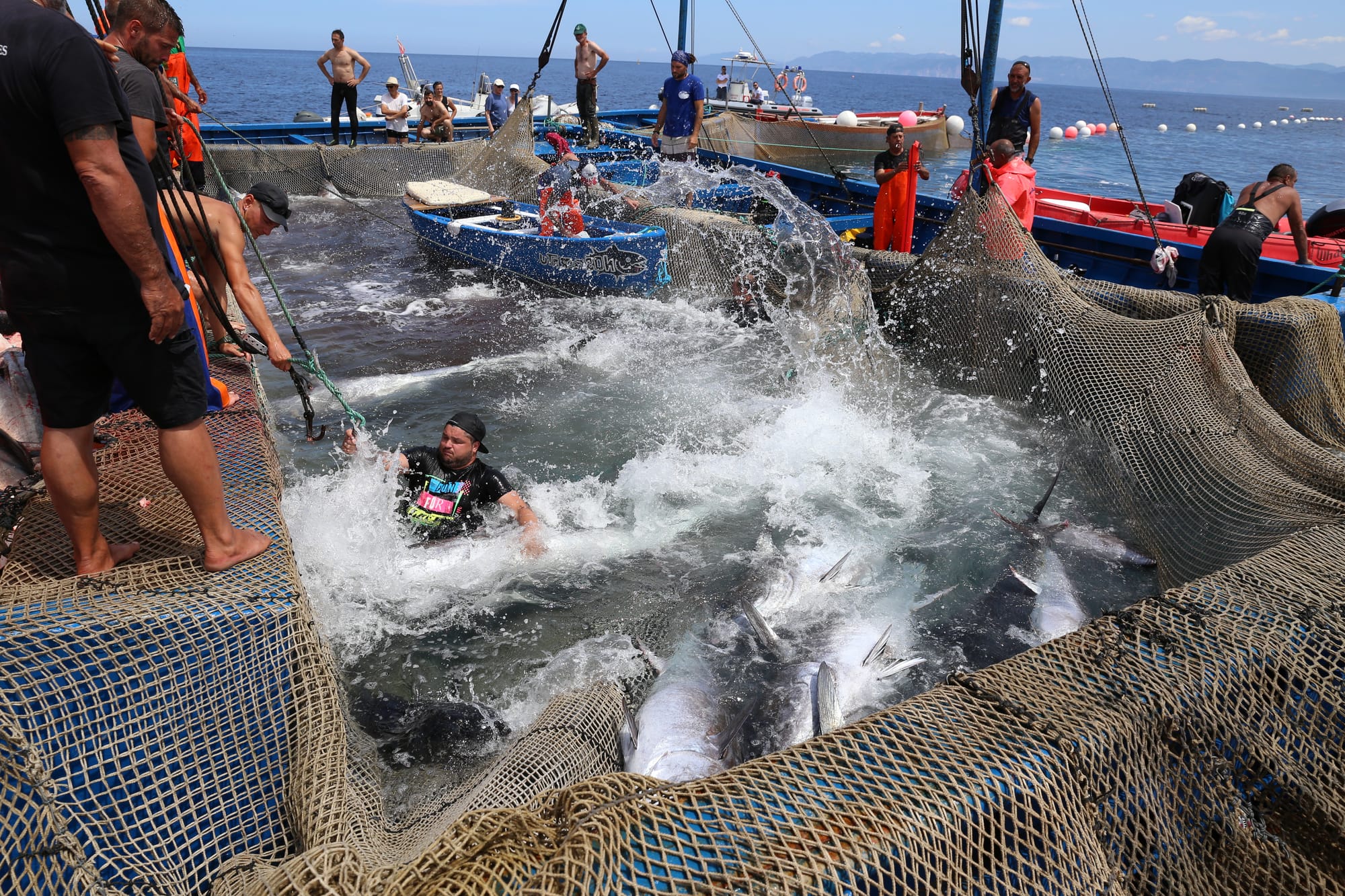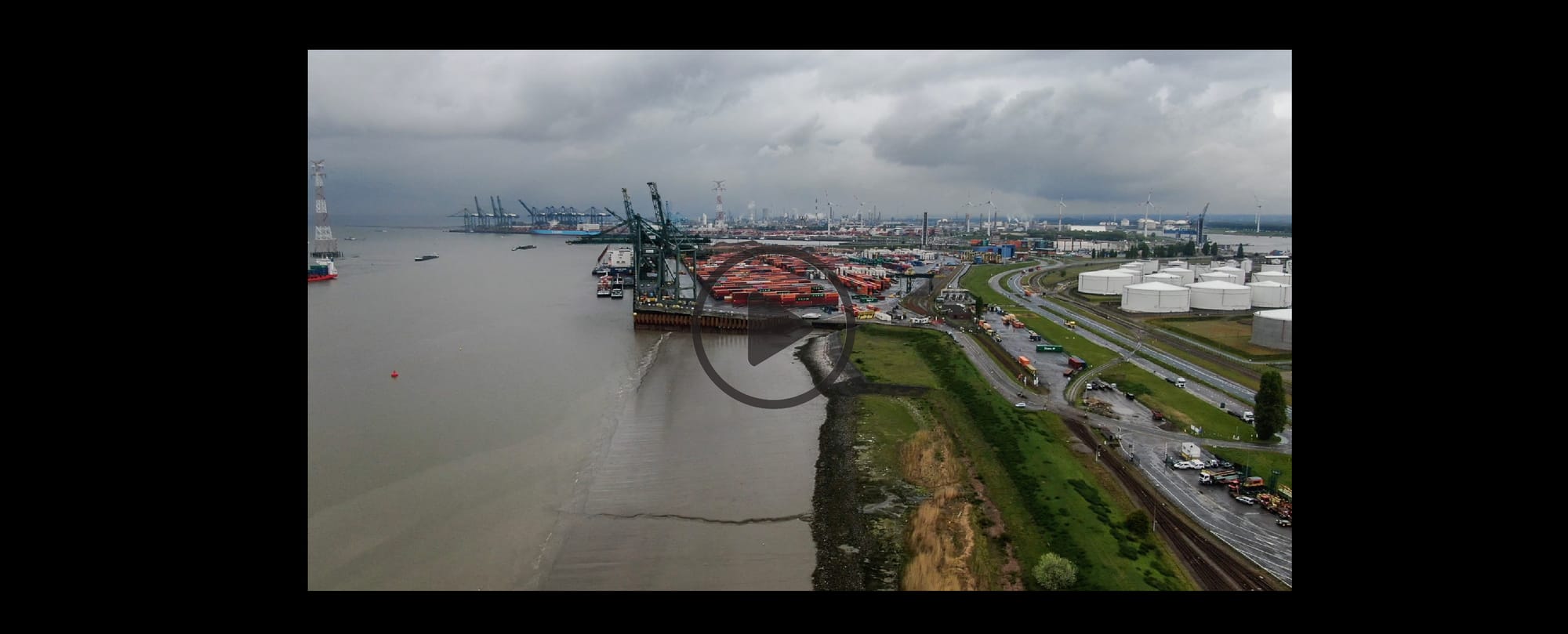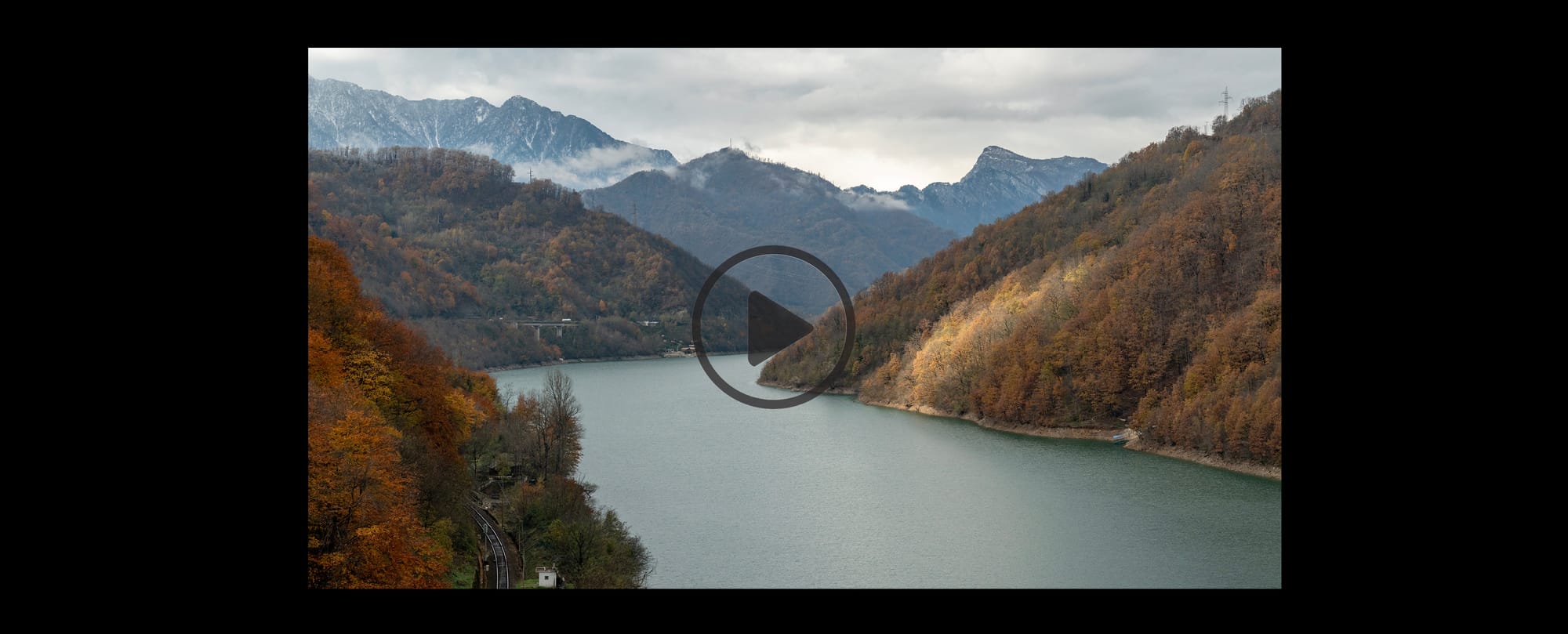In this issue of Lapilli, we are going to discuss the Med's lost winter and how droughts are affecting different regions, from parts of Italy, Spain and Morocco. We are also going to learn more about an ancient way to fish tuna and take a deep dive into the role anchovies’ sex life plays in ocean mixing. Back on land, we'll then explore Bosnia’s rivers and efforts to preserve them from hydropower projects. We hope you enjoy, forward this email and invite others to subscribe.

A warm winter and persistent droughts. It’s been and continues to be a mild winter for many places around the world, including the Med. January was the warmest January on record globally and February seems to be following the same track. These unusually high temperatures are affecting everything from sea temperature to snow and water reserves. Some parts of the Pyrenees mountains are experiencing a 24-year record low amount of snow. In the Alps, low levels of snow are affecting winter sports and the safety of some ski competitions. Sicily has declared a drought emergency, with the lack of rain particularly affecting pastures, hay growth and consequently livestock. In early February, northern Sardinia was in pre-drought conditions with some of its reservoirs at alarmingly low levels. In some parts of Morocco, where drought conditions have been ongoing for the last six years, temperatures reached 36.6 degrees Celsius (97.9 Fahrenheit) — levels usually recorded during summer. According to ClimaMeter the country’s winter heatwave is being fueled by climate change. Even Malta is experiencing severe water scarcity. The island's largest newspaper recently published an editorial highlighting the need for a long-term plan to tackle the issue starting with better land management. Some experts argue that if we don’t act now these drought conditions will become the new normal. To get a comprehensive picture of the consequences of this prolonged drought in the Mediterranean, we recommend the most recent report by the European Commission's Joint Research Center (JRC): Drought in the Mediterranean Region - January 2024.

Italy’s poorly managed water resources. The Italian peninsula, which is also suffering from prolonged droughts, in particular in Sicily and Sardinia, is actually a country rich in water, especially underground. About 85 percent of its drinking water comes from springs or wells. But according to a study from the 70s, Italy collects just 11 percent of usable rainwater. An updated version of this data is missing as are missing hundreds of reservoirs or artificial lakes in the country that could collect rainwater and redistribute it during droughts to mitigate the effects of extreme weather phenomena. To make matters worse, Italy's water network loses about 42 percent of its water (IconaClima).

The effects of marine heatwaves on French corals. Heatwaves occur not only on land but also in the sea. According to the Climate Change Service of the European Union’s Earth Observation Program, Copernicus, January’s sea surface temperatures were among the highest on record. Marine heatwaves have huge effects in particular on the coral population of the Mediterranean. Researchers have been studying coral populations in a few spots along the Calanques National Park east of Marseilles and have found that corals close to the sea surface have died off but those located 30 to 40 meters (between 98 and 131 feet) below the surface are still thriving. The hope is that by lowering human pressures from vulnerable areas, the coral population will rebound and perhaps evolve into a super colony adapted to higher temperatures. But it will take more than one generation to go back to a coral landscape comparable to the one that flourished a few decades ago (Euronews Green).
A vanishing (and more sustainable) technique to fish tuna. In the Mediterranean, an ancient way of fishing for tuna is slowly disappearing. It consists of a few nets, called tonnare, that are placed at sea and capture tuna as they swim past. When the tuna gets close, fishermen on several boats push them towards the so-called càmira dâ morti, or chamber of death. Here is where the killing, or mattanza, takes place. The fishermen harpoon the tuna one by one and hoist them onto the boats. Though this method might seem brutal, it grants the tuna a quicker and more humane end compared to suffocating from modern techniques. The mattanza is considered a sustainable fishing technique because it allows fishermen to selectively capture only the largest tuna, minimizing unintentional bycatch. Despite its sustainability and the rising tuna populations, the Mediterranean's tonnare are vanishing. Italy alone has seen a drastic decline, from 50 in the 1920s to just two today. In Sardinia's Carloforte, where the tradition persists, fishermen demand fairer quotas. At the same time, there's who argues that the tonnare should be protected by UNESCO as an intangible cultural heritage, as journalists Sandali Handagama and Agostino Petroni reported in a recent story for The Guardian.


Sexy anchovies. A recent study has revealed the surprising and significant impact anchovy spawning has on ocean mixing. The research, conducted off the coast of northwestern Spain, challenges our previous understanding of the role of animal activity in oceanographic processes. Traditionally, scientists believed that the movements of individual animals weren't significant enough to have any real influence on ocean mixing. However, this study on anchovies demonstrates that their mass spawning events generate substantial turbulence in the water. This turbulence effectively mixes different layers of water, which causes noticeable temperature fluctuations within the water column. The findings suggest that animal behavior, particularly large-scale coordinated activities like anchovy spawning, can play a more significant role in ocean mixing than previously thought (Hakai Magazine).
How sea temperatures affect phytoplankton. A recent study by CIMA Foundation researchers has identified a counterintuitive link between rising sea temperatures and a decline in winter phytoplankton blooms in the Mediterranean Sea. The study analyzed satellite data on chlorophyll concentration, a proxy for phytoplankton biomass, between 1998 and 2019. The analysis revealed a significant decrease in winter blooms, particularly in the northwestern Mediterranean. Researchers attribute this decline to rising sea temperatures, which prevent water from cooling and plunging to the bottom of the sea to trigger the upwelling of nutrients that is needed to trigger phytoplankton growth. The higher the surface temperature, the less the water mixes. Phytoplankton, which are microscopic marine organisms, form the base of the marine food chain and play a crucial role in ocean health not to mention the enormous quantity of carbon they capture. Their decline could have cascading effects, leading to food shortages for fish and other marine organisms, ultimately impacting fisheries and the overall health of the Mediterranean ecosystem.
Cultural heritage at risk. But let’s go back on land with this interactive map locating all the Unesco Heritage Sites across the Mediterranean that are at risk due to sea levels rising and extreme storm surge events.

Hydroponics to grow food in water-scarce regions. Palestinians living in refugee settlements in Jordan are using hydroponics to grow agricultural products. Hydroponics involve growing plants in a water-based nutrient solution without the need for soil. This technique significantly reduces water consumption compared to traditional farming methods, making it ideal for arid regions like Jordan. In Jerash camp, several initiatives are underway to empower refugees with hydroponic techniques. These projects provide training, resources and infrastructure to establish small-scale hydroponic gardens. Refugees are successfully growing various vegetables, herbs and even fruits using these systems. This not only contributes to their food security but also generates income through the sale of their produce. Experts believe that hydroponics offer a sustainable solution for cultivating crops in water-scarce environments (The Guardian via Egab).
Climate shelters. During the torrid summer of 2019 — an Iberian summer even hotter than their typical ones — the city of Barcelona came up with the idea of setting up public outdoor and indoor spaces where vulnerable people, such as the elderly, kids or people affected by chronic diseases, could find shelter when it's too warm or too cold. Such climate shelters are now spreading to other cities, too. The full story is on Solar, a newsletter by our colleagues at Radar Magazine.

Nasty nurdles. We want to flag two videos that appeared on the Italian weekly magazine Internazionale that caught our attention. The first one was shot and produced by our very own Davide Mancini and Marcello Rossi. Our colleagues traveled across Europe to visit sites with high concentrations of plastic pellets dispersed in the environment, which are usually locations near pellet production plants (Internazionale).

In defense of Bosnia’s wild rivers. The second video is about the rivers of Bosnia, which are among some of the most wild and natural in Europe. Since the early 2000s, because of green energy incentives, multiple dams have been built to produce energy. As a consequence, Bosnian rivers are increasingly being channeled and diverted, prompting a local movement to fight for the preservation of the rivers' natural state. Video maker Marco Carlone and freelance journalist Alex Čizmić reported the story thanks to a grant from Journalismfund.eu (Internazionale).


GUGLIELMO MATTIOLI
As a multimedia producer, he has contributed to innovative projects using virtual reality, photogrammetry, and live video for The New York Times. In a past life, he was an architect and an urban planner, and many of the stories he produces today are about the built environment and design. He has worked with publications such as The New York Times, The Guardian, and National Geographic. He has been living and working in New York City for 10 years.That's it for this month. Thank you for reading this far. See you in April or earlier with Lapilli+.
If this newsletter was forwarded to you, you can subscribe here to continue receiving it. Lapilli is free and always will be, but in case you would like to buy us a coffee or make a small donation, you can do so here. Thank you!
Lapilli is the newsletter that collects monthly news and insights on the environment and the Mediterranean, seen in the media and selected by Magma. Here you can read Magma's manifesto.

